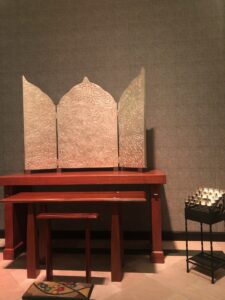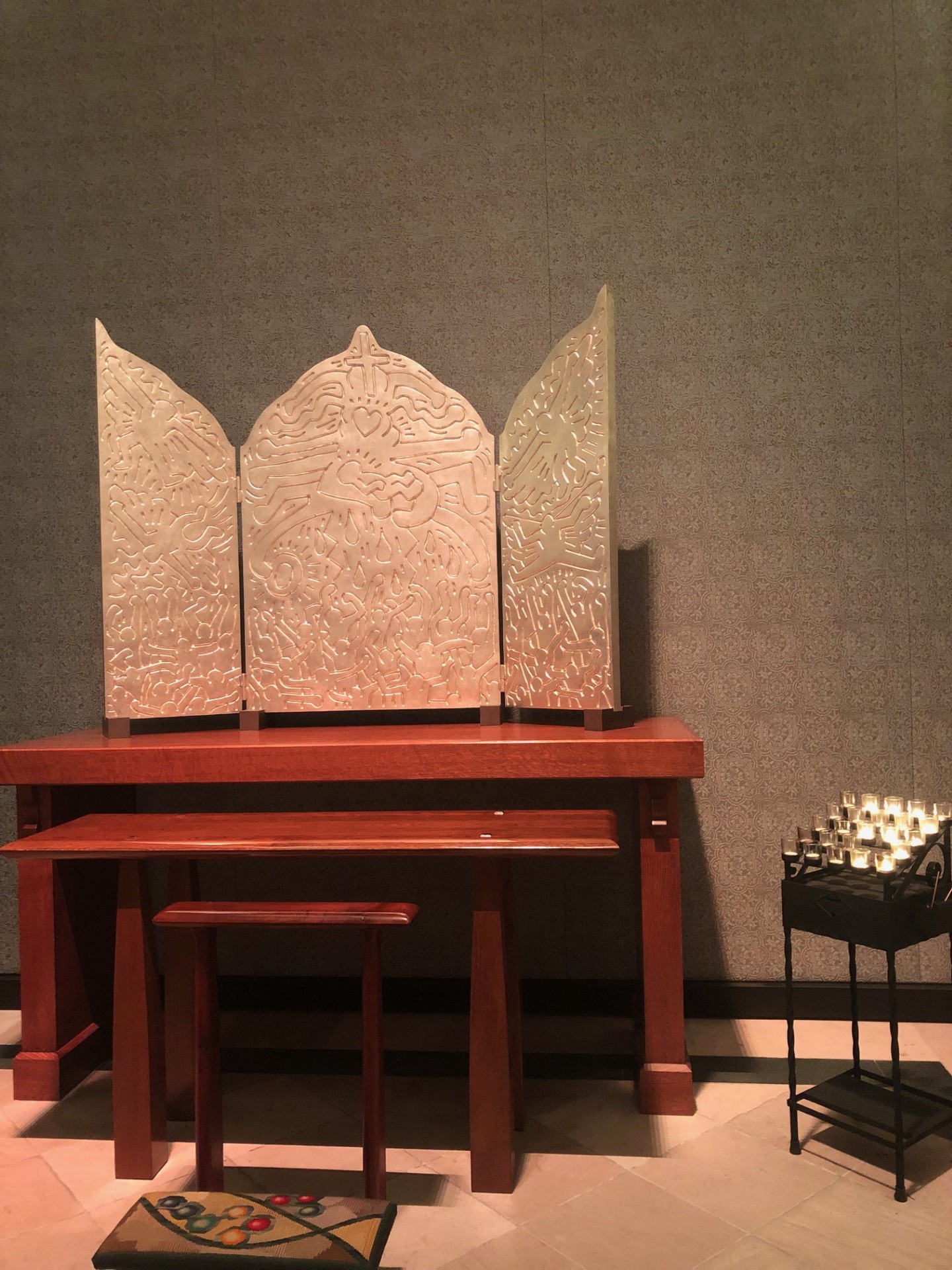
Photo courtesy of author.
San Francisco, CA
Gold is all you notice at first. A triptych dressed in shiny monochrome. The center of it is just above eyesight, so you’re left looking up at of Keith Haring’s altar, Life of Christ, an imposing piece, big enough to hold most of your gaze and envelop your mind. Haring made the original cast in 1990 and it’s considered his final work. Grace Cathedral in San Francisco acquired this edition in 1995 for its Interfaith AIDS Memorial Chapel.






